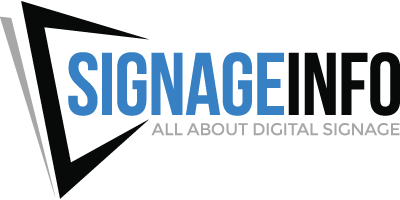Concerto is a web-based open-source digital signage system that enhances the way content is created and displayed across multiple screens. This open-source project is developed using the Ruby on Rails programming framework and is distributed under the Apache License 2.0. Originating in 2008 from the innovative efforts of students at Rensselaer Polytechnic Institute.
Concerto allows for the broadcasting of graphical, video, and textual messages through various templates that can be accessed and managed via a web browser. This system supports community engagement by enabling moderated user submissions or automated content imports from online sources. With features like multilingual content support, content scheduling, submission moderation, and detailed access controls, Concerto is adept at facilitating dynamic communication in environments as diverse as educational campuses and businesses.
This detailed analysis explores Concerto’s comprehensive features, supported platforms, the support and updates ecosystem, and evaluates both the benefits and challenges associated with its use in the digital signage market.
Features of Concerto
Concerto’s suite of features makes it applicable across different settings, including businesses and educational facilities:
- Content Management: The platform enables efficient management and scheduling of diverse content types such as images, videos, and text, which can be assembled into tailored playlists.
- Multi-Screen Support: It supports content distribution across multiple screens, facilitating varied content streams to different locations.
- Template System: Users benefit from a versatile template system for creating distinct layouts and backgrounds applicable across various signs and content categories.
- User Access Control: Concerto ensures controlled access with its comprehensive user management system, which regulates who can post or modify content.
- RSS Feeds and Live Data: The system integrates live data feeds, including RSS, weather, and news, ensuring that the information displayed is current and relevant.
Supported Platforms
Developed on Ruby on Rails, Concerto is compatible with all major operating systems such as Windows, macOS, and Linux that support Ruby. It operates on minimal hardware but requires a database (MySQL or SQLite) and a web server (Apache or Nginx).
Support and Updates
Concerto’s development is community-driven, with contributions made through GitHub. Although community support provides regular updates, it is noteworthy that the latest significant version, 2.3.6, was released on December 31, 2017. This indicates a period of over seven years without a major update, which might influence potential adopters’ decisions.
Implications of Limited Recent Updates
The lack of substantial updates in recent years can raise concerns regarding security, compatibility with new technologies, and the platform’s ability to incorporate modern digital signage functionalities. Users considering Concerto might need to invest additional resources in maintaining and customizing the software to meet contemporary standards.
Advantages of Concerto
- Cost Efficiency: As an open-source tool, Concerto is available at no cost, making it a financially viable option for various organizations.
- Customization: The platform’s open-source nature allows for extensive customization to meet specific user needs.
- Community Support: The active community around Concerto provides a resource for assistance and sharing enhancements.
- Scalability: From single-screen setups to extensive multi-display configurations, Concerto scales effectively to fit different deployment sizes.
Challenges of Concerto
- Technical Skill Requirement: Effective use of Concerto requires proficiency in Ruby on Rails and understanding of server management.
- Absence of Commercial Support: The platform lacks dedicated support services, which could be a critical factor for businesses requiring reliable, immediate technical assistance.
- Hardware Demands: Although the software is lightweight, larger installations with multiple feeds and displays may necessitate more powerful hardware.
Conclusion
Given the prolonged period without significant updates and the associated security risks, Concerto is best recommended for users who do not require developer support and are comfortable using or testing on older hardware platforms. It provides an opportunity to glean insights and ideas from an established old system, but for those seeking a more secure and actively maintained open-source digital signage solution, alternatives like Xibo or Anthias are advisable. These platforms offer more recent updates and active developer support, enhancing security and compatibility with modern technology.
To check out Concerto visit: https://www.concerto-signage.org/
Github Link: https://github.com/concerto/
Try out Concerto demo at: https://demo.concertohq.com/



